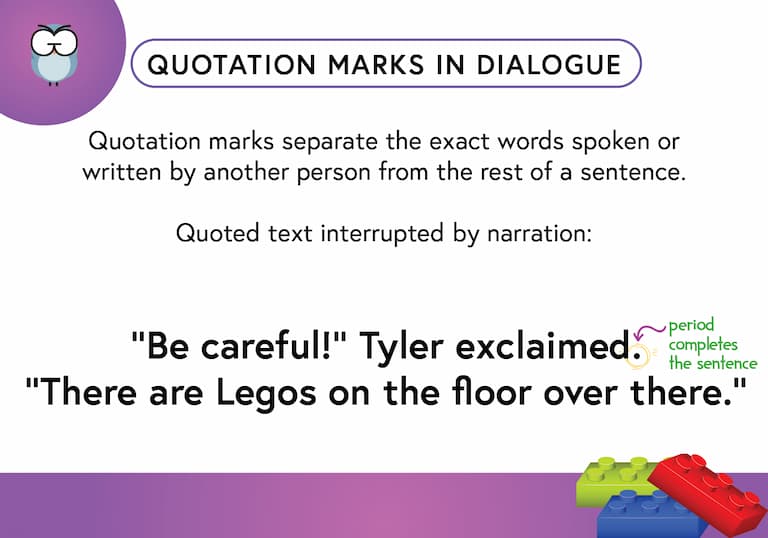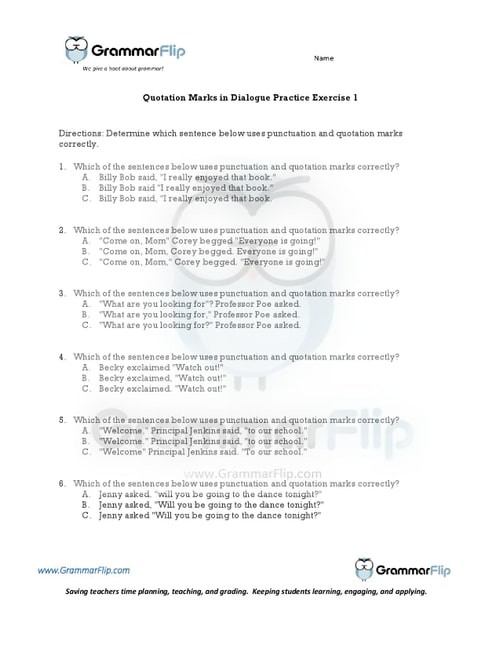How Do You Use Quotation Marks in Dialogue?
Quotation marks are punctuation marks that are used to separate the exact words spoken or written by another person from the rest of a sentence. Depending on where these quoted words appear in the sentence, the way in which the sentence is punctuated will differ.
Some examples of quotation marks used to indicate dialogue would be the following:
Quoted text interrupted by narration:
“Be careful!” Tyler exclaimed. “There are Legos on the floor over there.”
Quoted text appearing at the end of a sentence:
Davis said, “I am too sick to go to school today.”
Quoted text appearing at the beginning of a sentence with a question or exclamation:
“What are you writing your book report about?” Kenton asked.
“I am so excited to go to Niagara Falls!” Sebine shouted.
Quoted text appearing at the beginning of a sentence:
“Don’t forget to study for tomorrow’s vocabulary quiz,” Mr. Byron warned.
Now that you’re familiar with quotation marks, learn how to use quotation marks vs. italics in your writing!
Long-Form Videos: Quotation Marks in Dialogue
Long-form instructional video lessons allow students to engage with grammar concepts in more depth and detail.
This format provides students with a stronger foundation and a more comprehensive understanding of quotation marks in dialogue.
Short-Form Videos: Quotation Marks in Dialogue
Short-form videos are an excellent way to review grammar concepts. Our two-minute instructional videos help students review the concept of quotation marks in dialogue to further solidify their understanding.
Definition Cards: Quotation Marks in Dialogue

Definition cards reinforce grammar concepts by providing clear and concise explanations that students can easily reference for quick review and better retention. GrammarFlip’s definintion cards help students review the concept of quotation marks in dialogue to further solidify their understanding.
Download a Free Worksheet on Quotation Marks in Dialogue!
Click the image below to download your free worksheet on quotation marks in dialogue!

Need something more than just worksheets for your grammar instruction?
Explore More GrammarFlip Lessons!
Parts of Speech lessons provide the building blocks of grammar. GrammarFlip covers these topics in detail to ensure a solid foundation is built. First time learners and students seeking to review the parts of speech can both benefit from the instructional videos and slide show reviews.
Parts of the Sentence lessons are critical for understanding how the parts of speech function in language construction. From the basic to the advanced, these lessons will cover a wide range of grammar topics that can be used in any grade level or classroom.
Mechanics and Usage lessons equip students with the necessary skills to communicate clearly to all audiences. With a focus on the application of these concepts in student writing, these lessons tie together both simple constructions of grammar as well as the more complex such that any age or skill level of student will benefit.


